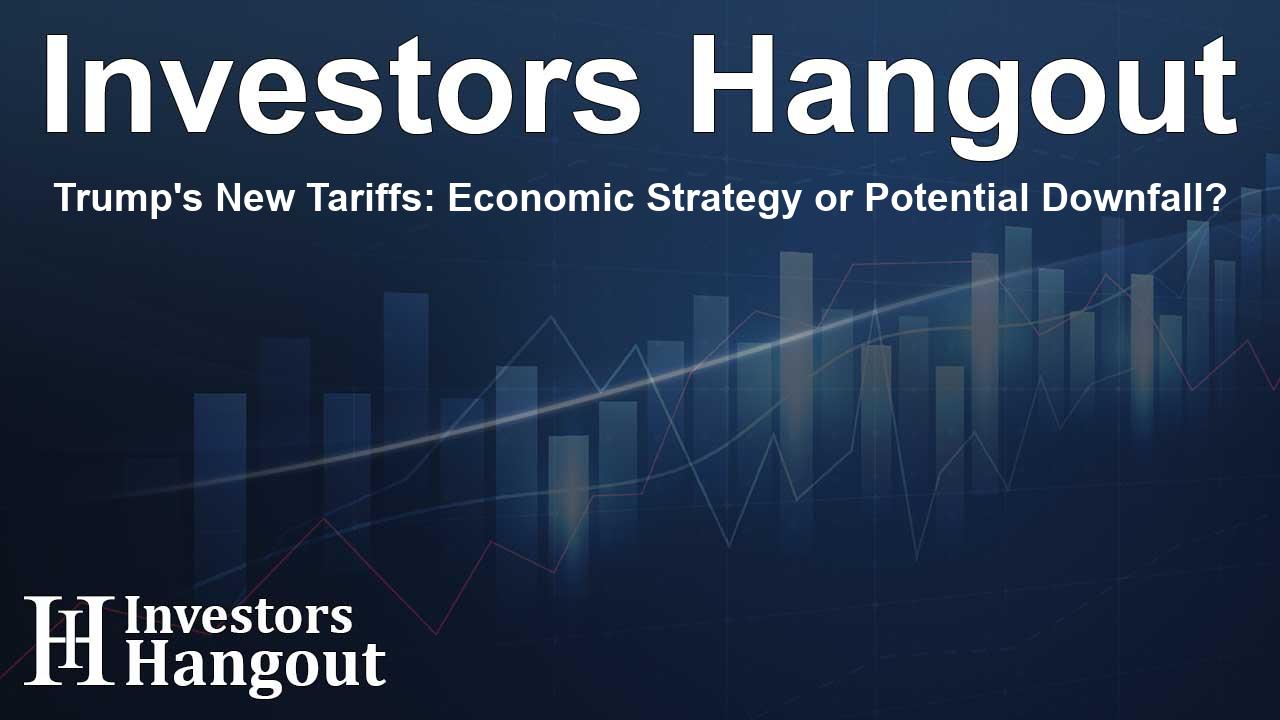Trump's New Tariffs: Economic Strategy or Potential Downfall?

Trump's Reciprocal Tariff Announcement
Recent moves by President Donald Trump signal a bold step in economic policy with the introduction of new "reciprocal tariffs." These tariffs are designed to bring substantial revenues into the U.S. from countries that have previously leveraged their positions to gain an economic advantage over American entities.
The Motivation Behind the Tariffs
In a recent statement on his social media platform, Trump emphasized the anticipated financial benefits, stating, "Reciprocal tariffs take effect at midnight tonight! Billions of dollars from countries that have taken advantage of the United States for many years will start flowing into the USA." The intention is to level the playing field, ensuring American companies can compete fairly.
Economic Benefits Expected
The introduction of these tariffs is expected to create a more equitable economic environment for U.S. businesses. This move aims to counteract trade imbalances and enhance the competitiveness of American goods in global markets.
Warnings about Legal Challenges
While the economic benefits are touted, the President raised concerns about potential challenges to the new tariff policy. In his remarks, he noted that intervention from "a radical left court that wants to see our country fail" poses a significant threat to the success of this initiative. Trump's assertion reflects ongoing tensions surrounding executive powers and trade regulations.
Past Legal Precedents
Historically, legal opposition has already arisen against attempts to impose such tariffs. Previously, the Court of International Trade indicated that these measures might exceed the executive branch's authority. Judges at the U.S. Court of Appeals have also expressed skepticism regarding the legality of Trump's tariff powers, raising questions about future enforcement.
Uncertainties in Market Response
As the legal landscape remains unclear, the immediate market reaction to the announced tariffs appears optimistic. The SPDR S&P 500 ETF Trust (SPY) and Invesco QQQ Trust ETF (QQQ) both saw increases in early trading sessions, reflecting investor confidence in the potential benefits of these new policy shifts.
Potential Economic Implications
However, the early indications suggest that tariff-driven inflation could pose challenges in the near future. Businesses are beginning to report increasing price pressures, with inflation showing signs of resurgence, raising concerns about the overall economic trajectory.
The Fear of Stagflation
The broader economic picture is complicated by signs of stagnation in key economic metrics. Analysts suggest that the U.S. could be facing a period of stagflation, characterized by both slowing growth and rising prices. This potential economic environment might limit the effectiveness of the reciprocal tariffs that are aimed at boosting revenues.
Conclusion: A Balancing Act
The launch of reciprocal tariffs marks a significant chapter in America's trade history. While they hold the promise of increased revenue and a fairer competitive landscape, the associated risks raise pertinent questions. Legal challenges, market responses, and the potential for inflation complicate the narrative surrounding Trump's economic policy. Moving forward, the administration and businesses alike will need to navigate these complex waters as they seek to achieve economic stability and growth in an unpredictable environment.
Frequently Asked Questions
What are reciprocal tariffs?
Reciprocal tariffs are taxes imposed by a country on foreign goods that are equivalent to those set by the foreign country on imported goods from the home country.
What is President Trump's goal with these tariffs?
Trump aims to level the playing field for American companies by imposing tariffs on foreign goods, making it financially beneficial for U.S. producers.
How have markets reacted to the announcement of the tariffs?
Initially, the SPDR S&P 500 ETF Trust (SPY) and Invesco QQQ Trust ETF (QQQ) both saw increases, indicating some investor confidence in the measures.
What are the potential risks of implementing these tariffs?
The risks include legal challenges, inflation, and the possibility of economic stagnation, which could undermine the intended benefits of the tariffs.
How do tariffs affect consumers?
Tariffs can lead to higher prices for consumers, as businesses often pass on the increased costs of imported goods to consumers, potentially contributing to overall inflation.
About The Author
Contact Owen Jenkins privately here. Or send an email with ATTN: Owen Jenkins as the subject to contact@investorshangout.com.
About Investors Hangout
Investors Hangout is a leading online stock forum for financial discussion and learning, offering a wide range of free tools and resources. It draws in traders of all levels, who exchange market knowledge, investigate trading tactics, and keep an eye on industry developments in real time. Featuring financial articles, stock message boards, quotes, charts, company profiles, and live news updates. Through cooperative learning and a wealth of informational resources, it helps users from novices creating their first portfolios to experts honing their techniques. Join Investors Hangout today: https://investorshangout.com/
The content of this article is based on factual, publicly available information and does not represent legal, financial, or investment advice. Investors Hangout does not offer financial advice, and the author is not a licensed financial advisor. Consult a qualified advisor before making any financial or investment decisions based on this article. This article should not be considered advice to purchase, sell, or hold any securities or other investments. If any of the material provided here is inaccurate, please contact us for corrections.
